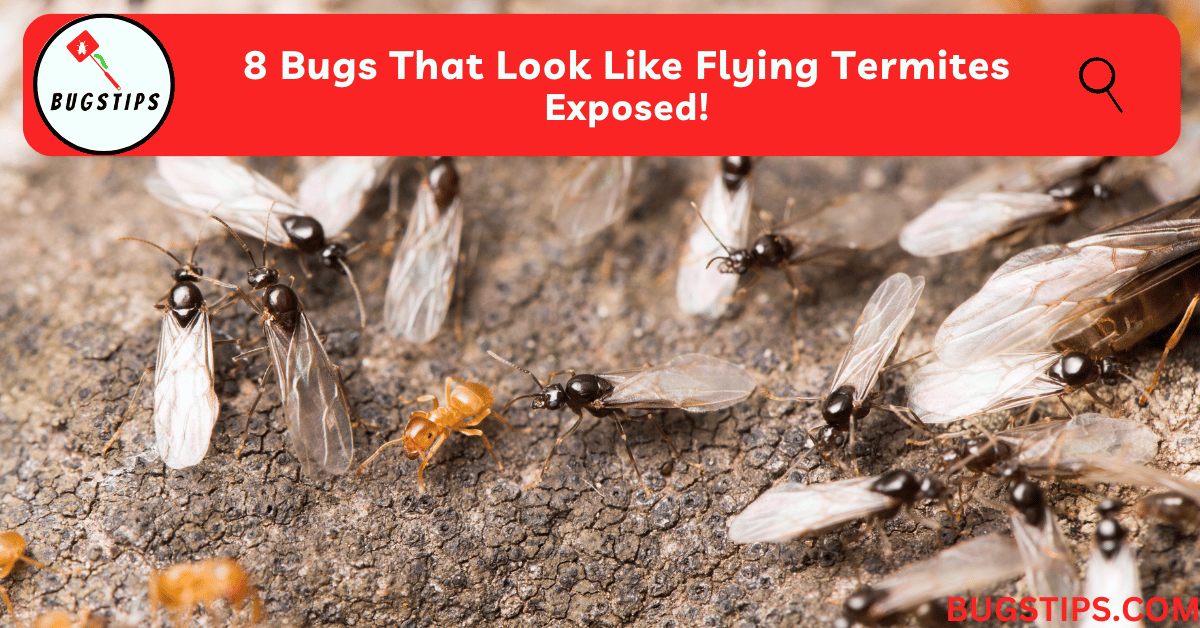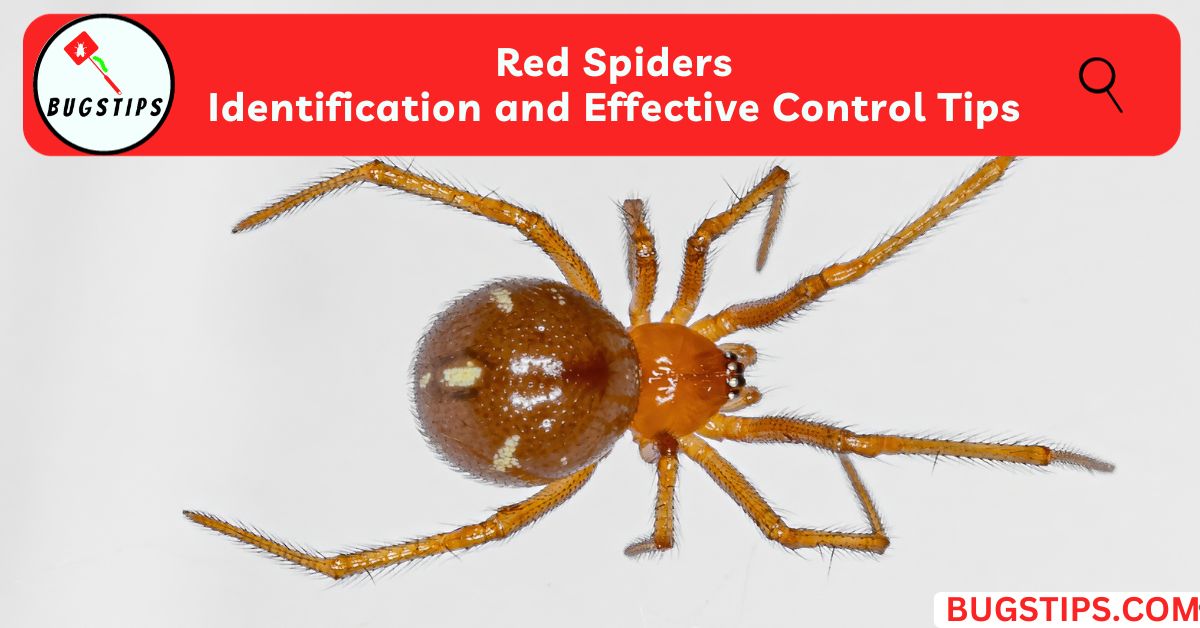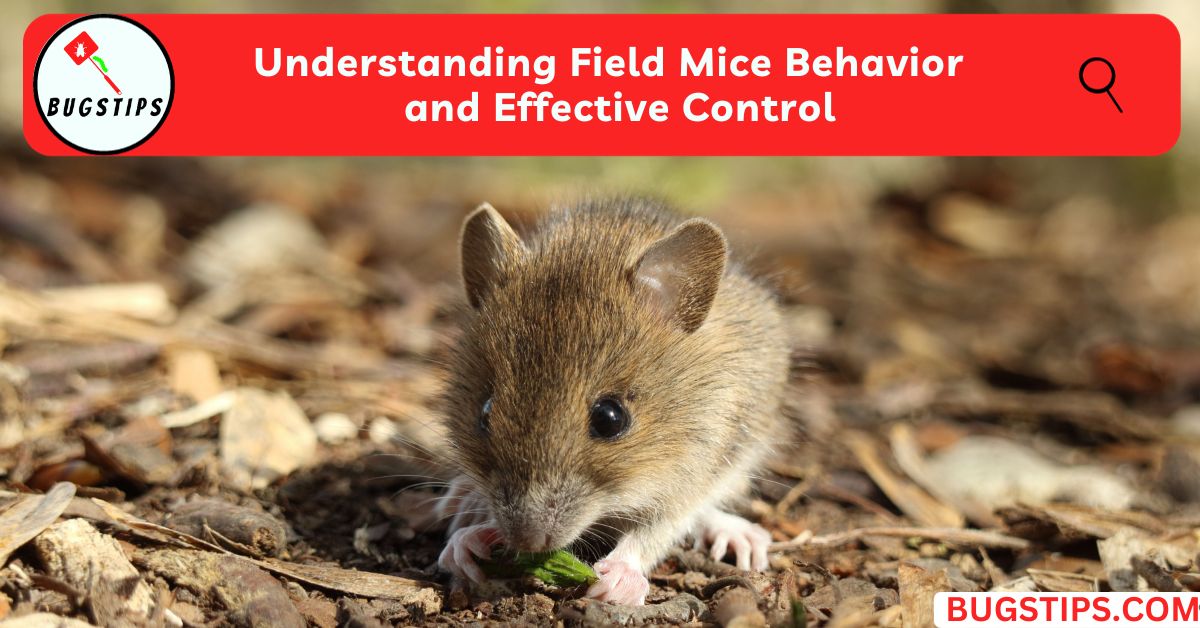This post may contain affiliate links which means as an Amazon Associate, this site may earn a small commission on qualified purchases made through links at no extra cost to you. Learn more on Affiliate Disclosure
When you see a swarm of small, winged insects around your home, it’s natural to wonder if they are termites.
However, not all bugs that fly and look similar to termites are not termites. Identifying these insects correctly is crucial for taking appropriate action and preventing infestations.
In this article, we’ll explore some common bugs that resemble flying termites, such as flying ants, mayflies, green lacewings, antlions, carpenter ants, acrobat ants, winged carpenter bees, and powderpost beetles.
By learning how to differentiate these bugs from flying termites, you’ll be better equipped to protect your home from potential damage.
So, let’s dive in and learn more about bugs that look like flying termites!
Related Article – 10 Long Skinny Black Bugs in House
Bugs That Look Like Flying Termites
Identifying insects that resemble flying termites can be challenging, but it’s important to distinguish them to prevent potential infestations.
Here we’ll explore common bugs that look like flying termites.
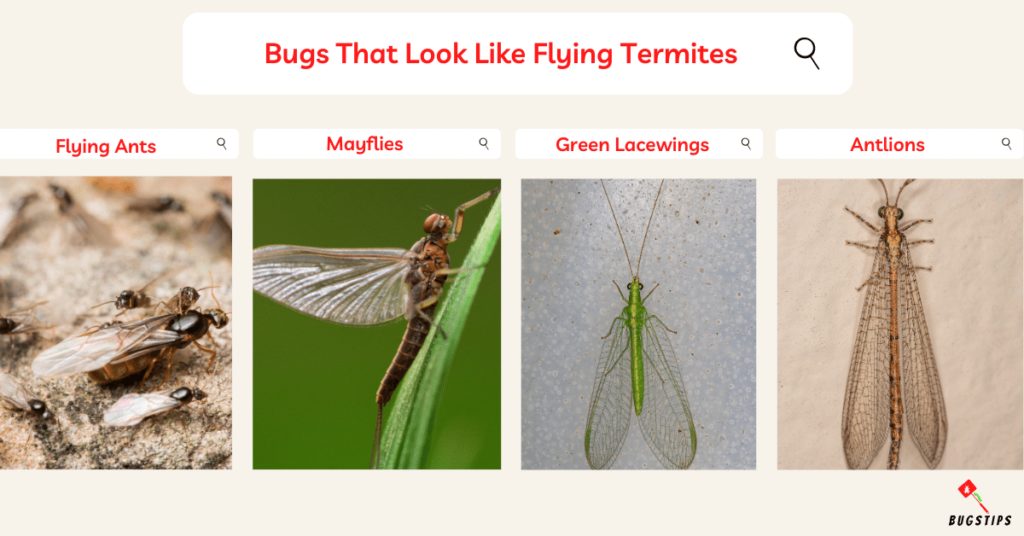
Flying Ants
- Flying ants are often mistaken for flying termites due to their similar appearance, especially during their swarming stages.
- However, these insects have some key differences that set them apart.
Related Article – Flying Ants in Arizona: 10 Amazing Facts
- Unlike termites, flying ants have elbowed antennae, unequal wing lengths, and a narrow waist, giving them a distinct hourglass shape.
- Additionally, flying ants have larger hind wings compared to their front wings, while termites’ wings are equal in size.
- If you spot winged insects in your home during certain seasons, they might just be harmless flying ants, not termites.
Mayflies
- Mayflies are delicate insects often found near bodies of water.
- While they may not be as common indoor pests, their appearance can be mistaken for flying termites when seen in large numbers.
- Mayflies have elongated hindwings and three long tail filaments, whereas termites have a distinct waist and straight antennae.
- If you notice these graceful insects swarming near water bodies, rest assured they’re not termites but mayflies going about their natural life cycle.
Related Article – Termite Larvae: A Comprehensive Guide
Green Lacewings
- Green lacewings are beautiful insects with intricate, lacy wings, but they can also be mistaken for flying termites.
- These helpful insects are natural predators of aphids and other small pests, making them beneficial for gardens.
- However, their slender body and fluttering flight can sometimes cause confuse.
- So if you see these elegant creatures hovering around your plants, they’re likely green lacewings, not termites.
Antlions
- Antlions are fascinating insects that resemble small, winged termites during their adult stage.
- However, they are entirely harmless and feed on nectar and pollen, unlike termites, which can cause structural damage to wooden structures.
- Antlions are named for their unique predatory behavior as larvae.
- Their larval stage is characterized by pit-digging and sand-trapping, where they wait for unsuspecting ants to fall into their traps.
- Rest assured, these insect imposters are not termites.
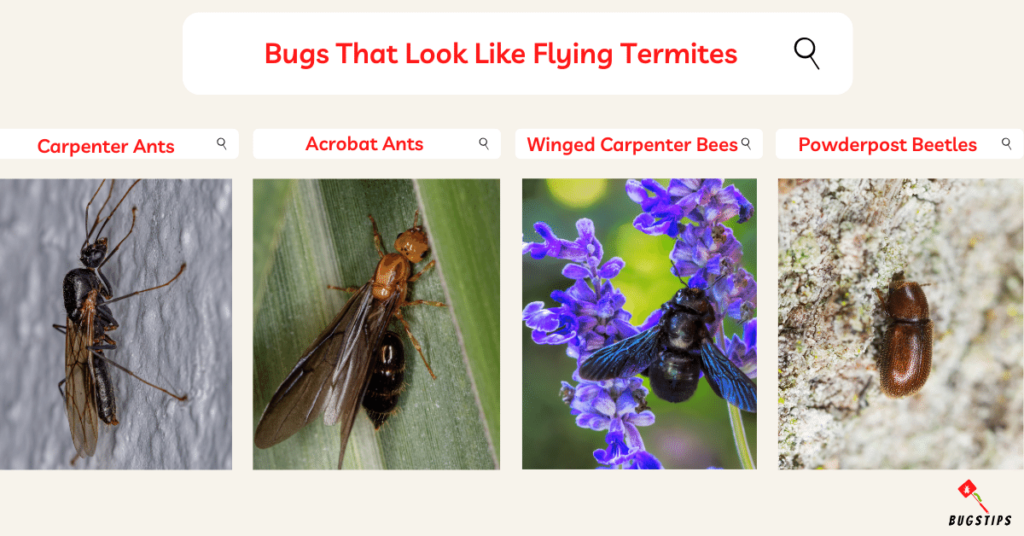
Carpenter Ants
- Carpenter ants are another group of insects often confused with termites, especially when they are seen flying.
- These ants are larger than termites and have a more prominent and rounded thorax.
Related Article – What Attracts Carpenter Ants
- Unlike termites, carpenter ants do not consume wood but excavate it to create nests and tunnels, causing significant structural damage over time.
- If you encounter winged ants around your property, take a closer look to determine whether they’re carpenter ants or actual flying termites.
Acrobat Ants
- Acrobat ants are small ants with a heart-shaped abdomen and the ability to raise their abdomen over their thorax.
- This behavior, similar to acrobats performing, gives them their name.
- While they may not be as common as other ant species, their appearance can lead to confusion with flying termites.
- However, acrobat ants do not pose the same threat as termites when it comes to wood damage.
- So, if you spot these ants crawling or flying around your property, they’re likely not termites.
Winged Carpenter Bees
- Carpenter bees are often mistaken for flying termites due to their size and appearance.
- The round holes created by solitary bees nesting in wood can resemble termite activity, leading to confusion for some people.
- However, carpenter bees do not consume wood like termites but rather use it for nesting.
- If you see large bees hovering around wooden structures, they’re likely carpenter bees and not termites.
You May Also Like – Bugs in Mailbox: 10 EASY Ways to Keep Them Out
Powderpost Beetles
- Powderpost beetles are tiny insects that infest and damage wooden structures.
- These beetles have flattened bodies and antennae that are significantly longer than those of flying termites.
- Additionally, their appearance varies depending on the species, but they lack the distinct waist found in termites.
- If you come across small beetles emerging from the wood, they might be powderpost beetles, not termites.
Related Article – 14 Small Tiny Brown Bugs In House
Identifying these insects accurately is essential to avoid unnecessary concerns and take appropriate action when dealing with potential infestations.
How to Differentiate Bugs From Flying Termites
To make it easier for you to identify these insects, we have created a useful table that highlights the key differences between flying termites and other look-alike bugs.
By using this table as a reference, you can confidently differentiate between these insects and take appropriate action.
| Bugs That Look Like Flying Termites | Description | Size | Color |
|---|---|---|---|
| Flying Ants | Ant-like insects with wings | 0.25 to 0.50 inches (6.35 – 12.7 mm) | White, reddish, light brown, or black |
| Mayflies | Delicate insects with wings | 0.10 to 0.13 inches (2.6 – 3.2 mm) | Yellow, light red, dark brown, or black |
| Green Lacewings | Graceful insects with lacy wings | 0.25 to 1.10 inches (6.35 – 28 mm) | White, Green, yellow, or brown with pale wings |
| Antlions | Insects with elongated bodies | 0.50 to 1 inch (12.7 – 25.4 mm) | Reddish-black, light brown, or black |
| Carpenter Ants | Ants with reddish-brown or black | 0.75 inches (19 mm) | Reddish-brown or black |
| Acrobat Ants | Ants with light green bodies | 0.75 inches (19 mm) | Light green with lacy wings |
| Winged Carpenter Bees | Bees with shiny black bodies | 0.75 to 1 inch (19 – 25 mm) | Shiny black with yellow patches |
| Powderpost Beetles | Wood-boring beetles with wings | 0.16 to 0.75 inches (4 – 19 mm) | Light brown to reddish-brown and black |
Related Article – 8 Bugs That Look Like Lint and Bite
Can Bugs That Look Like Termites Cause the Same Damage as Termites?
This is a question that often arises when people encounter insects resembling termites around their homes.
While bugs that look like termites may share similar physical characteristics, their potential for causing structural damage differs significantly.
Subterranean termites, for example, create elaborate tunnels in the ground and build mud tubes to access above-ground food sources. They feed on cellulose-rich materials like wood, paper, and plant debris, posing a serious threat to buildings and homes.
On the other hand, bugs that resemble termites, such as flying ants, mayflies, green lacewings, antlions, carpenter ants, acrobat ants, winged carpenter bees, and powderpost beetles, have different feeding habits and nesting behaviors.
While some of these insects may be seen around wood or even bore into it, they do not consume wood as a primary food source like termites do.
Flying ants, for instance, are primarily attracted to sweets and proteins and do not damage wooden structures.
Mayflies, green lacewings, and antlions are not wood-destroying insects at all, and carpenter ants, though they may excavate wood to create nests, do not consume it for sustenance.
You May Also Like – 15 Tiny Yellow Bugs
Similarly, acrobat ants and winged carpenter bees do not pose the same level of threat to buildings as termites do.
Powderpost beetles, while they may infest and damage wood, do not cause the same degree of structural damage as termites.
Their feeding habits focus on the wood’s surface, leaving behind small, pin-sized holes, but they do not create extensive galleries and tunnels within the wood like termites.
Preventing Infestations of Bugs That Look Like Flying Termites
As mentioned earlier, bugs that look like flying termites don’t cause significant damage, and most of them are harmless.
However, some of these bugs can become a nuisance if they find their way into your home. Preventing infestations of such insects is crucial to maintain a pest-free living environment.
Here are some effective measures you can take to prevent infestations of bugs that resemble flying termites.
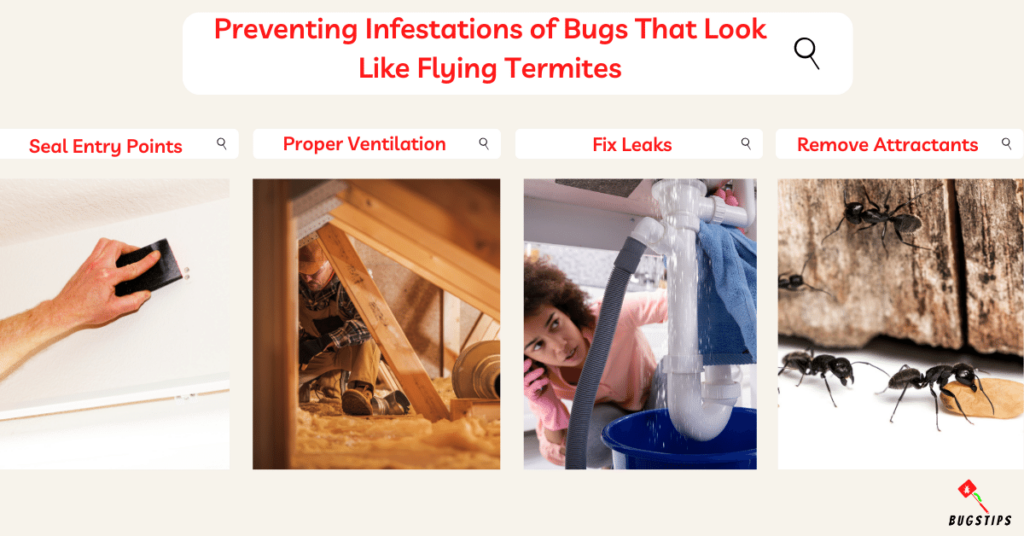
Seal Entry Points
- Inspect your home for any cracks, gaps, or openings in doors, windows, and walls.
- Seal these entry points to prevent bugs from entering your living spaces.
- Pay particular attention to areas where plumbing and utility lines enter your home.
Proper Ventilation
- Ensure good ventilation throughout your home, especially in attics and basements.
- Proper ventilation reduces moisture levels, making your home less attractive to certain bugs that thrive in damp environments.
Fix Leaks
- Repair any water leaks promptly, as stagnant water can attract certain insects.
- Check for leaks in plumbing, roofs, and gutters and address them as soon as possible.
Related Article – 12 Tiny Black Bugs on Window Sill | Quick Fixes
Remove Attractants
- Bugs that look like termites, such as carpenter ants and winged carpenter bees, are often drawn to decaying wood.
- Remove dead trees, stumps, and rotting logs from your property to reduce their appeal to these insects.
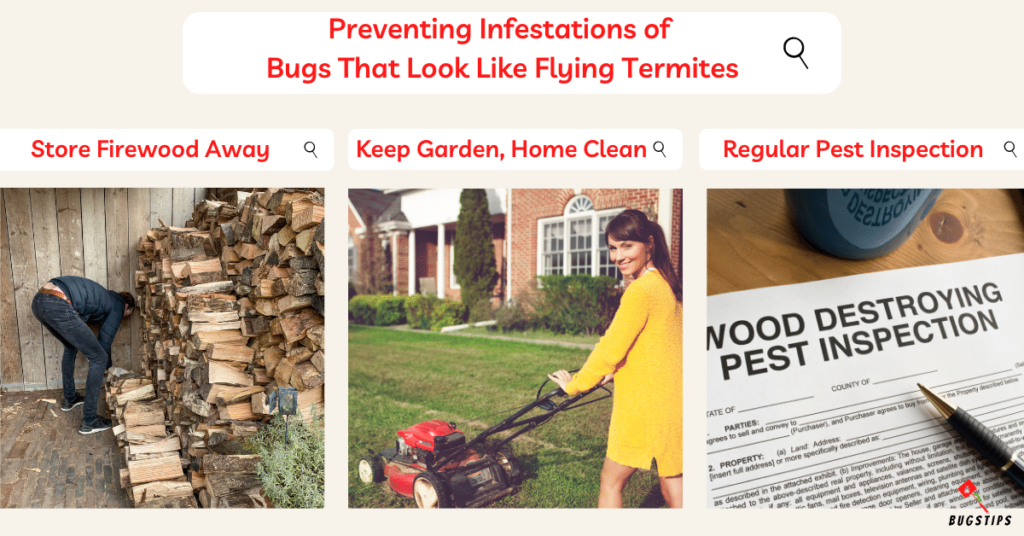
Store Firewood Away
- If you store firewood, keep it away from the exterior walls of your home.
- Elevate the firewood stack and store it off the ground to discourage insects from nesting in it.
Keep Garden and Home Clean
- Trim back vegetation and foliage that may touch or lean against your home.
- This prevents bugs from using plants as bridges to gain entry into your house.
- Keep your home clean and free of food debris.
- Crumbs and spills can attract ants and other insects into your living spaces.
- Store food in airtight containers to prevent attracting pests like ants and flying bugs.
Regular Pest Inspection
- Schedule regular pest inspections with a professional exterminator.
- They can identify potential problem areas and provide tailored solutions to prevent bug infestations.
By following these preventive measures, you can minimize the likelihood of bug infestations and create a more comfortable and pest-free home environment. If you do encounter persistent pest issues, don't hesitate to seek assistance from a qualified pest control expert to ensure effective and safe pest management.
You May Also Like – Little Black Bugs in My Car | Expert Removal Guide
Final Thoughts
Bugs that look like flying termites can be a cause for concern for homeowners. While many of these insects are harmless and do not pose a significant threat to structures, some can cause damage to the wood in other ways.
It’s important to correctly identify these insects to ensure appropriate action is taken. By following the steps outlined in this article, you can prevent infestations of bugs that look like flying termites and protect your home from potential damage.
If you’re unsure about the type of insect you’ve found in your home, it’s best to consult with a professional pest control service for an accurate assessment and treatment plan.
We hope this article has provided valuable insights into bugs that resemble flying termites and how to handle them effectively.
FAQs
What are the bugs that look like termites?
Bugs that resemble termites include flying ants, mayflies, green lacewings, antlions, carpenter ants, acrobat ants, winged carpenter bees, and powderpost beetles.
What are those flying bugs in Florida that look like large termites?
In Florida, the flying bugs that look like large termites are often flying carpenter ants or subterranean termites, both of which can be commonly mistaken for each other.
What are small little bugs that look like termites but aren’t in my closet?
Small little bugs that resemble termites but aren’t typically found in closets may include flying ants, booklice, or silverfish.
What are small little bugs that look like termites but aren’t in my closet?
If you’ve found bugs that look like termites in your closet, they may be flying ants, booklice, or silverfish.
What are bugs that look like termites but aren’t flying ants?
Bugs that look like termites but are not flying ants may include winged carpenter ants, flying termites (swarmers), and winged carpenter bees.
Why do I have bugs that look like flying termites in my house?
Bugs that look like flying termites may be drawn to your house due to factors like being attracted to light sources, searching for food or nesting locations, or due to nearby breeding areas.
Can flying ants cause the same damage as termites?
No, flying ants do not cause the same level of damage as termites. Unlike termites, flying ants do not consume wood and are generally not destructive to structures.
Are dampwood termites more attracted to wet or dry wood?
Dampwood termites are attracted to moist or damp wood. They prefer wood with high moisture content and are commonly found in areas with water leaks or excessive humidity.
How long do flying termites’ swarms typically last?
Flying termite swarms typically last for a short period, usually around 30 minutes to an hour. During this time, the termites mate and disperse to form new colonies.
Are powderpost beetles dangerous to humans?
Powderpost beetles are not dangerous to humans. While they infest and damage wood, they do not pose any direct health risks to people.
Resources – (for further reading)
Royal Society of Biology – Why do ants fly?
University of Minnesota Twin Cities – Carpenter ants
Britannica – Mayfly | Antlion | Carpenter bee

